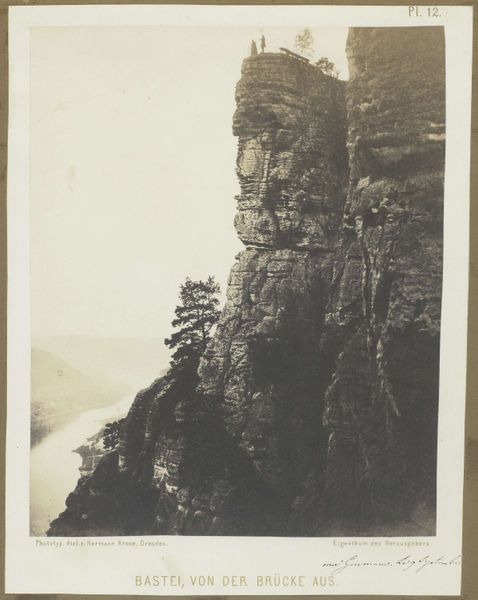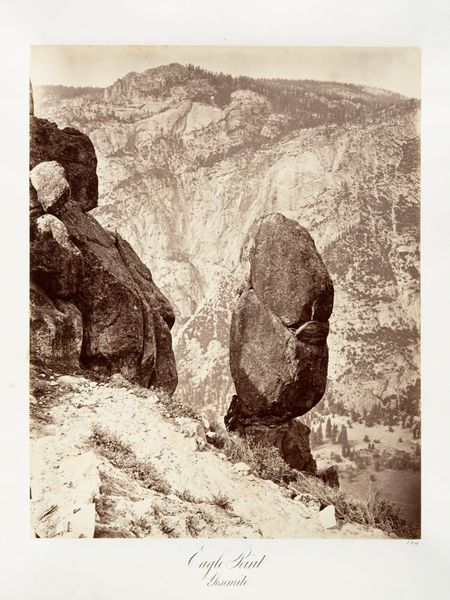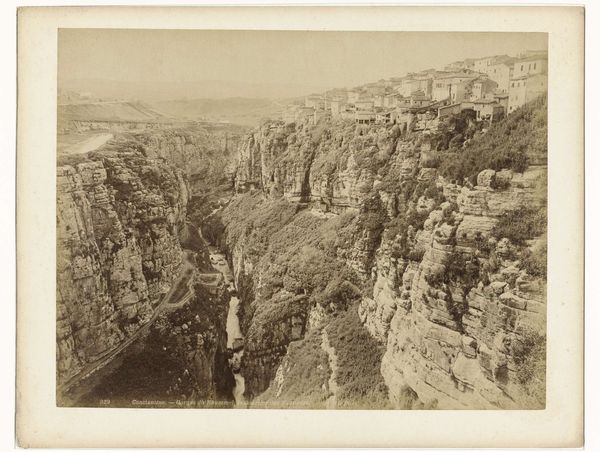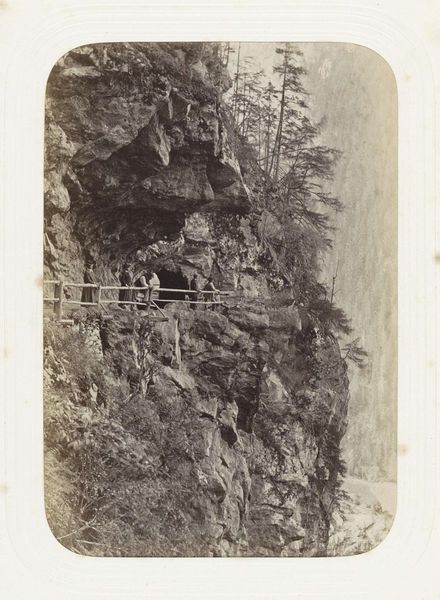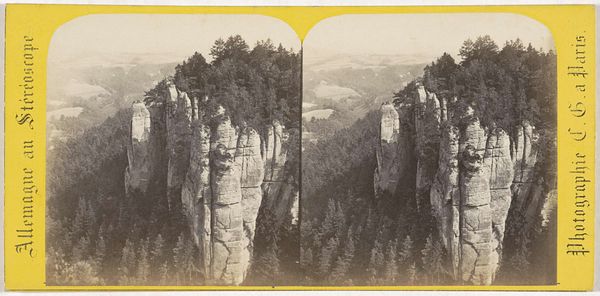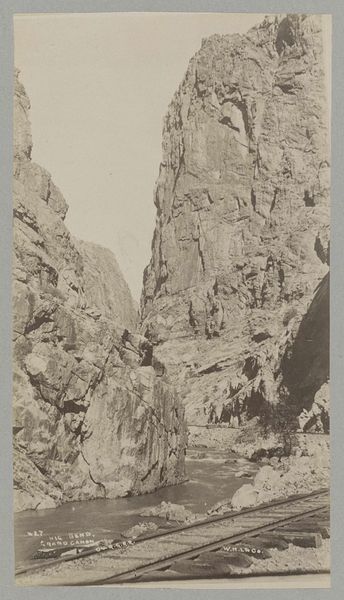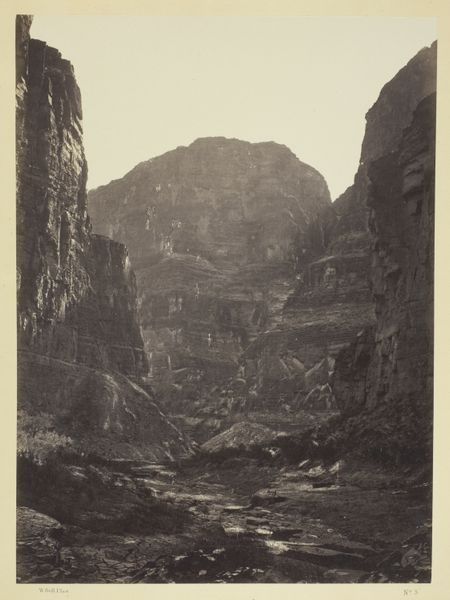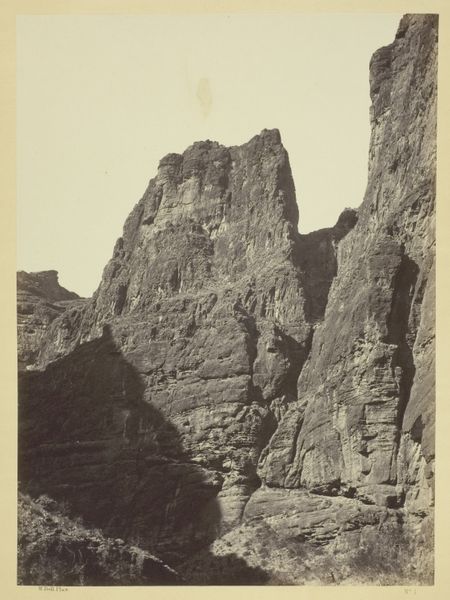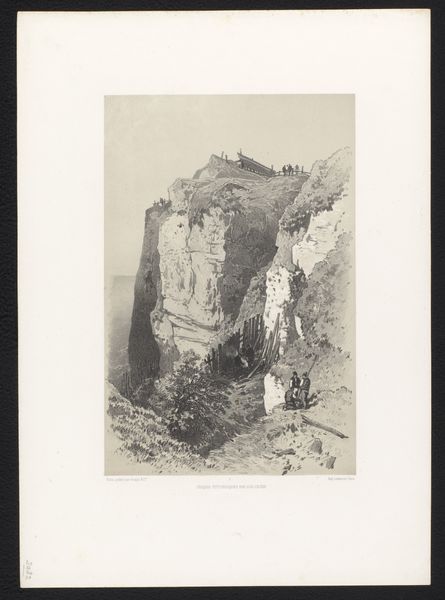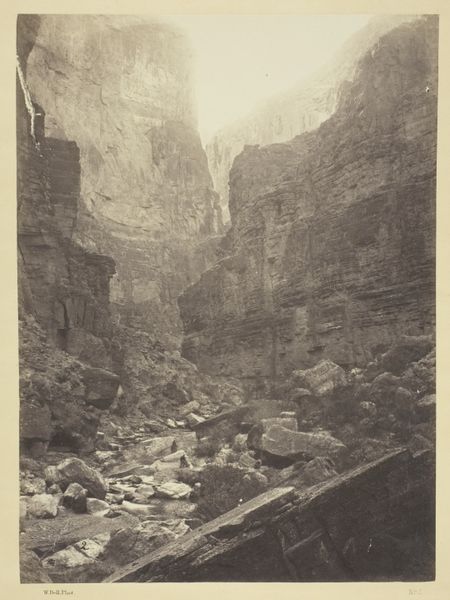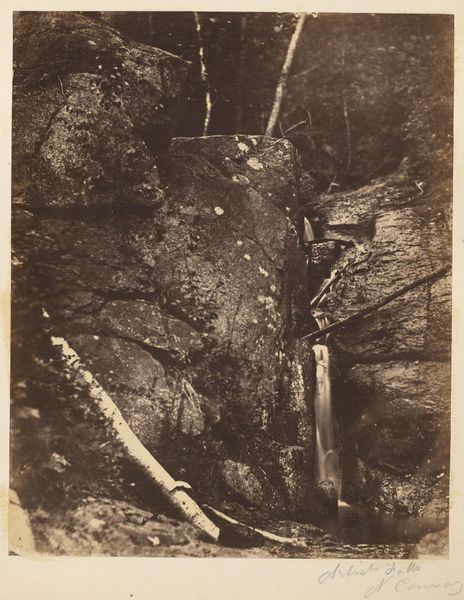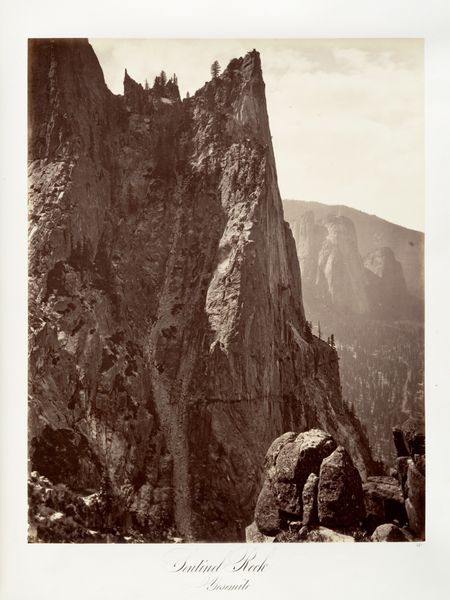
Dimensions: height 206 mm, width 166 mm
Copyright: Rijks Museum: Open Domain
Editor: Hermann Krone’s "Rotslandschap met de Prebischkegel in de Sächsischen Schweiz," dating from possibly 1857-1859, is a gelatin silver print that really captures a stark, almost otherworldly landscape. What symbolic readings can we draw from such a stark photograph? Curator: What I see here is the human impulse to monumentalize nature, and also the transience of human endeavors against the backdrop of geological time. The Prebischkegel becomes a kind of natural obelisk, but even these stone formations are not permanent. Editor: An obelisk… so you see a sort of human aspiration even in natural forms? Curator: Absolutely. The very act of photographing it, naming it – the "Little Prebisch Cone" – this imposes a narrative, a way of understanding our relationship with the earth. Think of Romanticism, of landscape painting traditions. Do you notice that viewing platform on top of the rocks at the left of the frame? Editor: Yes, almost an echo of the stone column at center... an invitation for humans to take in nature from an aestheticized space? Curator: Exactly. Consider what that platform represents: the human desire to conquer, to witness, to *possess* a landscape visually. What memories are preserved here? And what hubris? Editor: I hadn't considered that angle. I was focused on the starkness, the kind of sublime feeling, but I see how cultural and individual experiences are equally captured in the print. Curator: Indeed. And, like all memory, this photograph presents only one possible viewpoint. But perhaps the most vital thing is, that prompts another and then another.
Comments
No comments
Be the first to comment and join the conversation on the ultimate creative platform.
